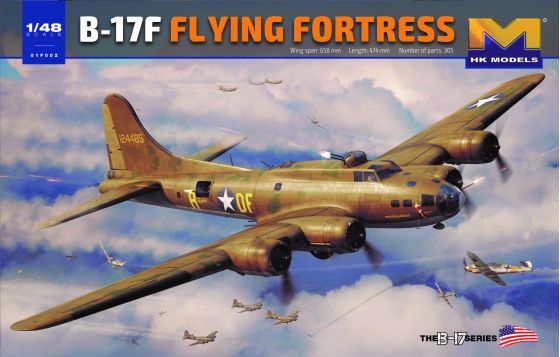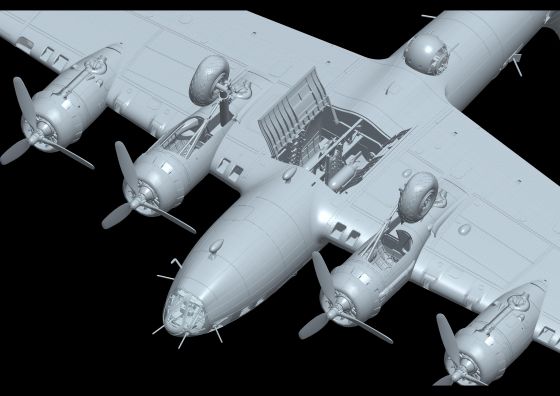Description
The Boeing B-17 ‘Flying Fortress’ was one of the U.S.A.’s main four-engine heavy bombers, operating alongside the B-24 Liberator, and the later B-29 Superfortress, in all theatres of World War 2. It’s a fact that the B-17 almost never saw its place in history and the defeat of Nazi Germany, as the prototype, known as Model 299, crashed due to pilot error during its evaluation in October 1935. Thankfully, the design had shown such promise during the testing phase, in fact exceeding the requirements of the original specification, that further prototypes were ordered despite boeing losing the original contract with the United States Army Air Corps.
It was this further evaluation that saw the type enter active service in 1938. The actualame ‘Flying Fortress’ was coined by a newspaper hack who witnessed a roll-out of the machine, bristling with guns and turrets, and Boeing realised that this was the sort of propaganda they needed, and trademarked the name. After the initial prototypes, serial production of the B-17 began with the B-17B variant and underwent a major revision with the introduction of the ‘E’. This type featured a substantially redesigned tail and fillet that featured throughout subsequent versions, giving the b-17 its iconic profile. An extra 10ft of length was added to the fuselage. Other refinements included the addition of a tail and dorsal turret, and the addition of a Bendix turret to replace the fixed bathtub type that had graced previous versions. This was found to be disappointing and was eventually replaced with the Sperry ball turret that became a permanent feature of all future marques.
Differences
between the E & F versions were mostly changes in nose armament layout,
with staggered cheek guns being implemented, and a change in the bombardier’s
glass nose, although this would vary occasionally between machines, with a a number of sub-types and adaptations being fitted. Other changes included engine cowls with
rounder forward radius, paddle-blade prop blades and strengthened undercarriage
the allowed the internal bomb load to double from 4000lb to 8000lb.
The B-17F was
powered by 4 x Wright R-1820 “Cyclone” turbocharged radial engines that were
constantly uprated over the service life of the B-17, and also carried
11 x .50cal M2 Browning machine guns, with a twelfth being sometimes fitted in the glass nose. Wingspan was 103ft 9in,with a length of 74ft 4in. A crew of 10 was typically carried by the B-17.




























